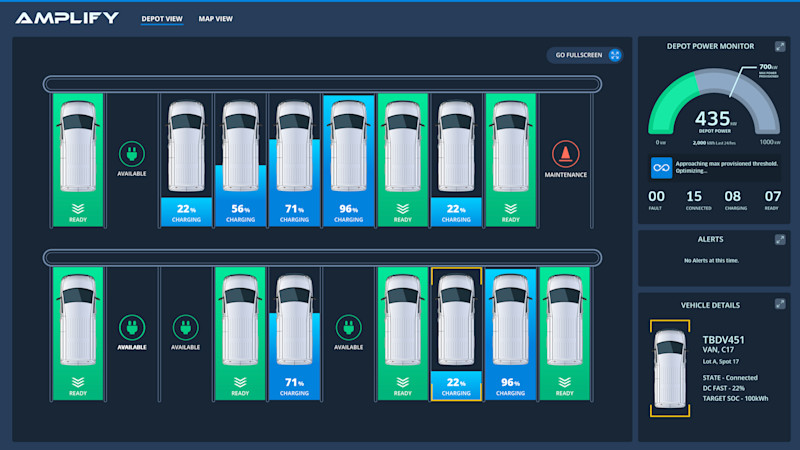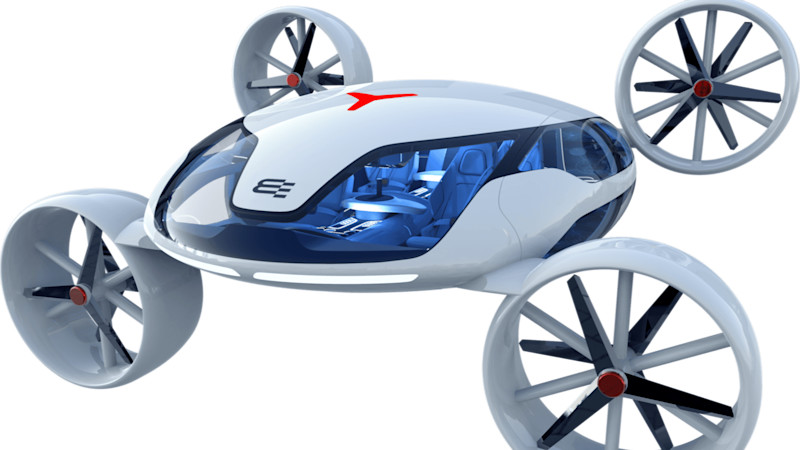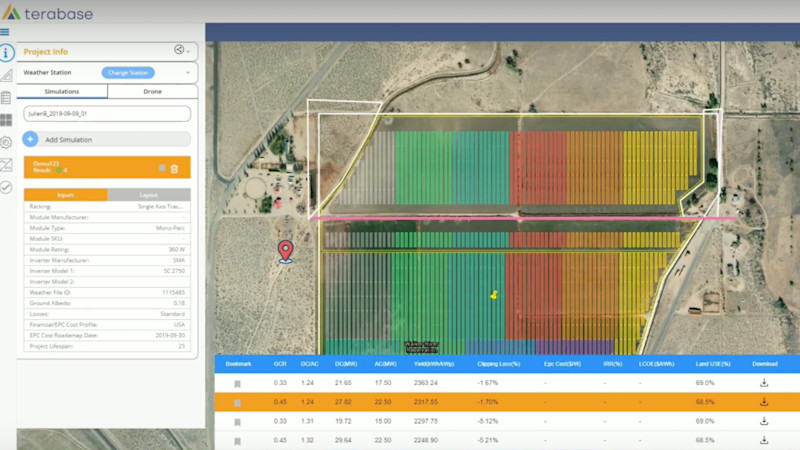Interviews With 5 Silicon Valley CEOs Leading Sustainability Startups
Table of contents
The Org interviewed the CEOs of five promising sustainability startups to discuss their markets, challenges, target buyers, and team strategies.

From flying cars to nuclear waste, The Org interviewed the CEOs of some of the most promising Seed and Series A stage sustainability startups in the San Francisco Bay Area. We discussed their market, challenges, target buyers, and team strategy. In alphabetical order:
-
AMPLY Power - Vic Shao - Provides commercial fleet operations a charging-as-a-service approach to help fleets transition to electric vehicles.
-
Deep Isolation - Liz Muller - Leverages directional drilling technology to safely isolate nuclear waste deep underground in horizontal drillholes.
-
HyPoint - Dr. Alex Ivanenko - Develops zero carbon emission hydrogen fuel cell systems for air transportation and urban air mobility.
-
Pachama - Diego Saez-Gil - Building a technology verified marketplace for forest carbon offsets to make forest conservation and reforesting one of the most profitable businesses of the 21st century..
-
Terabase - Matt Campbell & Chris Baker - Reduces the cost and accelerates the deployment of utility-scale solar PV through the digitalization and automation of the solar power plant.
AMPLY Power - Vic Shao, Founder & CEO

Org Chart | |
AMPLY Power provides commercial fleet operations a charging-as-a-service approach to help fleets transition to electric vehicles
Investors
($15M+ Funding) Soros Fund, Siemens, Congruent Ventures, Obvious Ventures, KittyHawk Ventures
What’s the challenge?
Governments and fleet operators generally do not want to manage depot powering and optimization of their electric fleets. These include commercial fleets and freight carriers, school bus operators, port authorities, government/municipalities, autonomous vehicle fleets, and sanitation/waste management fleets. They want to pay for what they use, just like using managed data centers (ex. AWS) and solar developers. This would allow them to scale operations with a customer to fit their needs.
But whether you’re a government or commercial fleet operator, adopting a new electric fleet program is hard. Major challenges include:
- Route & schedule planning
- Efficient depot layout
- Ramp-up time - determines how many vehicles are on-site and how fast they charge given the facility’s service load
How do you help?
By partnering with AMPLY Power, fleet customers remove the risk of time-of-use and demand-charge driven pricing variance, which provides a known, consistent cost for electric fuel-as-a-service. We assume full financial responsibility of a depot or fleet’s energy costs as it relates to EV charging. We do this with real-time energy-flow management technology that keeps fleets charged at the best cost.
Other fleet charging companies do offer fleet charging programs, but they center around supplying hardware/software and not the management, financing, or operational services.
AMPLY is unaffected by regulatory or technology changes because it doesn’t focus on any single service solution, charging technology, or industry.
How would a remote-first approach change the way you think about finding and onboarding talent?
Most of our teams are already working remotely. Currently, we are offering remote positions until the COVID-19 restrictions have lifted. Because AMPLY Power’s technology is mostly on the cloud, this wouldn’t significantly impact our remote-first approach.
How can The Org help you grow faster?
Help us find great talent! We’d love to hear from interested candidates in business development and software engineering who would like to apply to AMPLY Power. AMPLY is a fast-growing 2020 Global CleanTech 100 company, honored for Innovation in Electric Vehicle Fleet Charging and Management. We are an energy technology company going after an emerging $100B market opportunity.
Deep Isolation - Liz Muller, Founder & CEO

Org Chart | |
Investors
($14M+ Funding) Our investors consist primarily of angel investors, individuals, and environmentalists concerned about the issue.
What’s the challenge?
Nuclear power contributes more than 10 percent of the world’s power needs. From the 500 reactors built around the world, the growing inventory of nuclear waste is more than 490,000 metric tons and is increasing by ~15,000 tons each year. Today’s total disposal value of the existing nuclear waste is worth $660 billion and growing.
Aside from our focus on advancing the technology, our other priorities include:
- Navigating the complex political and regulatory landscape for nuclear waste.
- Building close partnerships with the communities that might one day host a nuclear waste disposal site.
- Meeting the needs of the diverse stakeholders in the buying process, including government ministries, scientific research organizations, national labs, and nuclear waste management organizations.
The challenge is that to date, no country has implemented a national solution for nuclear waste disposal, and those that are exploring currently available options are finding such options to be extremely expensive that can take decades to implement. It can also be difficult to achieve consent among diverse stakeholders.
How do you help?
We are doing something that has never been done before: a private company offering permanent disposal of high-level spent nuclear fuel to countries worldwide. And equally important, our core values are centered on engaging affected communities — a process that Deep Isolation is committed to doing right.
Our team is highly experienced; one founder has significant nuclear and scientific expertise, the other is an environmentalist with community engagement experience. Our broader team has decades of expertise in nuclear engineering and handling, geology and drilling, stakeholder engagement, and government affairs and NRC licensing. Our advisors include Nobel Laureates, a former Secretary of Energy (Obama Administration), and a former Nuclear Regulatory Commission Commissioner.
How has Covid-19 affected how you think about org structure or design?
The shelter-in-place environment has required everyone to adapt to the technologies of a remote workforce. It has pushed us to be 100 percent virtual, a process that can be challenging, depending upon our job roles. We’ve tried to maintain our productivity and holistically support our employees the best we can, for example by offering stipends for office supplies, sending care packages, and scheduling time for physical fitness and social gatherings.
Being virtual does have an advantage for our recruiting efforts, as it means we can attract talent from anywhere.
What are the top three questions about organizational design, behavior, or learning that you wish you had the answers to?
How do you overcome remote worker technology fatigue? How do you overcome resistance to adopting technology? And how do you recreate the water cooler collaborations that occur at an in-person office?
HyPoint - Dr. Alex Ivanenko, Co-founder & CEO

Org Chart | |
Investors
Undisclosed
What’s the challenge?
In the next 15 years, the world will be under massive pressure to improve urban transportation. We’ll need smart, long-lasting, urban air mobility vehicles (think: flying cars) for use in metropolitan environments. These are expected to carry passengers and cargo and often require vertical take-off and landing.
The biggest technological roadblock to a future with widespread urban air mobility vehicles is specific power and energy density of power sources. Virtually all traditional energy sources used today (e.g. fossil fuel, batteries) are prohibitively impractical given their inability to deliver distance/range, speed, convenience, and cost-efficiency.
The biggest non-technological roadblock will be governmental regulation and approvals for urban air mobility transportation, though we have seen incredible movement recently with this as well. The demand for hydrogen as a clean energy source is only growing, as evidenced by recent proposals from VP Biden and the E.U., both of which are underpinning their clean energy plans on hydrogen power.
How do you help?
We've developed an air-cooled hydrogen fuel cell that delivers the specific power and energy density that is necessary for use in urban air mobility vehicles. HyPoint’s hydrogen fuel cells offer zero-carbon emissions, superior energy performance, and refuels in minutes - a dramatic improvement over existing fuel systems. Our team has more than 65 U.S. patents and decades of experience in delivering next-generation energy solutions to global markets.
How do you think about your org structure as you scale?
Right now, the team is small — all senior-level scientists and academics involved in research, development, science, and engineering — and is incredibly agile. As a result, there's no immediate need to scale.
Pachama - Diego Saez-Gil, Founder & CEO

Org Chart | |
Investors
($4M+ Funding) Saltwater Capital, Lowercarbon Capital, Y Combinator, Third Kind Ventures, Tobi Lutke (Shopify Founder), and Tim Schumacher (Ecosia Founder)
What’s the challenge?
If we are to save civilization, humanity must conserve and restore the planet’s forests. There are a billion hectares of forest that can be restored to capture CO2 from the atmosphere.
Today, many companies pledge to tackle climate change by reducing their carbon footprint voluntarily. Companies that can’t reduce enough buy carbon “credits” that pay for projects to remove specified amounts of atmospheric CO2 - like planting trees.
We expect carbon regulations to become widespread in the 2020s and 2030s as climate change becomes undeniable, causing the compliance markets to massively grow.
There are presently five major challenges to making forest conservation via carbon credits profitable:
- Proof of Carbon Removal - Current measurement methods aren’t precise or accurate, so it’s unclear that paying for the carbon credits will remove the carbon from the atmosphere.
- Bureaucracy in Certification Process - Let’s say you own a piece of land and want to plant trees or conserve existing forests that are under threat of deforestation. To certify the land for use in carbon markets, you have to go through a process that is bureaucratic, manual, and costs a lot of money.
- Certification Bodies are Behind on Tech - To be accepted by certification bodies, we need to constantly present proposals with evidence that satellite-based methodologies are as precise as established methods, like sending people into the forest to inspect each tree.
- Collecting Field Data - Collecting ground truth data (knowledge of what’s actually on the ground) to inform machine learning models requires extensive partnerships with local organizations to send people into the forests. Furthermore, although drones are getting cheaper, there are limitations in how we can get the most high definition data sources, like LiDAR.
- Communicating to Corporate Buyers that Carbon Offsets Are Impactful - Previous failures in this space have made corporate buyers wary. Many don’t know of incredible carbon market projects, like converting cattle ranches into forests with millions of trees.
How do you help?
Pachama is leveraging three major shifts in technology:
- The growth of nano-satellites in space that allows for very frequent coverage of the entire planet, with high definition multi-spectral imagery.
- Deep Learning and Convolutional Neural Networks for predictive modeling.
- Drones that have bigger and bigger ranges, which can carry devices such as LiDAR.
Using the above, we can accurately measure carbon captured by trees through remote verification and monitoring of forests. This provides a new standard of assurance in carbon markets, allowing organizations (like our customer Microsoft) to achieve their carbon neutrality goals. We can also:
- Connect companies to carbon certified projects around the world via a marketplace.
- Create new, certified forest projects by reducing the complexity, price, and time to get certified.
How do you think about your organizational structure as you scale?
We have a flat structure with 12 people: eight software engineers led by my co-founder, and four in bizops led by me. We also create functional, project-based teams as needed.
We want mission-oriented people. Of course, we use OKRs - the Objectives and Key Results management methodology pioneered at Google. But people who care about the mission tend to be responsible, make good decisions, and help the team learn and adapt fast.
How would a remote-first approach change the way you think about finding and onboarding talent?
When founding the company we decided to be a remote org, but with COVID-19, we went fully remote. We started hiring outside the Bay Area. It’s been great! We’re really productive. We do miss hanging out with each other at the office and in-person, but we complement that with retreats when travel is allowed.
The key for us is being transparent and making it easy to document progress and conversations, which is why we have replaced emails with Slack, Notion, and Asana.
What are three ways readers of The Org might help you grow faster?
- Introductions to sustainability departments at large companies, or to sustainability-minded leaders at smaller companies (ex. Head of Marketing, cofounders).
- We’re hiring! Software developers and BD/Ops people who are passionate about climate change.
- Introductions to people working on forest restoration in nonprofits. They will be the next generation of forest project developers, and we want to help them lead!
Author Note: Shortly after this interview, Diego’s home was burned to ashes in the California wildfires. Please see his note here: .
Terabase - Co-founders: Matt Campbell (CEO) & Chris Baker (EVP, Sales & Marketing)

Org Structure | |
Investors
($2M+ Funding) City Light Capital, Powerhouse Ventures
What’s the challenge?
There’s a massive growing need to install giant, utility-scale solar farms. Global annual installations will exceed 100 GW outside of China next year, which means there’s a global market size of approximately $75 billion. Solar equipment costs are down about 90% in the past decade. The “easy” cost reduction has largely been solved; the equipment and factories have already been scaled up.
Now to be competitive as a business, companies involved in building solar power plants have to do it an organized and streamlined way. But that last 10% is hard. There are many human challenges when designing and managing these projects. Field engineers and energy plant personnel are used to an “old fashioned” way of doing things, and it requires both human behavior changes and systems to significantly improve efficiency.
And there are dozens of companies involved in any one solar installation from countries all over the world. These include developers, Independent Power Producers (IPPs) and Engineering, Procurement and Construction (EPC) companies, and dozens of consultants. They are often geographically distributed, many from countries all over the world, and they have their own, decentralized, non-standardized processes!
Other companies are biting off pieces of the digitalization challenge, like flying drones for topographical survey data or performance monitoring, but nobody is tackling it comprehensively.
How do you help?
We make a web-based GIS tool for decision-making from the early stages of siting through to design optimization. We’re the first to build an end to end platform for digitalizing the solar power plant - a platform for the digital twin of the physical plant. We also provide integrated consulting and engineering services. We are most active in the U.S., Middle East, Australia, and Vietnam, but we are engaged with companies and customers on five continents.
We have a huge advantage because our six co-founders worked closely together as executives at SunPower. Since the mid-2000s, our core team led the development and construction of some of the earliest and most complex large utility-scale projects in the world, like California Valley Solar Ranch (312 MWp) and Solar Star I and II (747 MWp). Our team was fully integrated from cell manufacturing through to project development, design, construction, operations, equipment manufacturing, and O&M. That gave us special insight into the challenges and business processes associated with each stage of the project lifecycle.
How would a remote-first approach change the way you think about finding and onboarding talent?
As for most other businesses, COVID-19 has forced us to learn to communicate and collaborate remotely. It requires a greater trust placed in our team to get the work done with more autonomy. Not sure it has affected our org design much, but it has made us more comfortable sourcing certain roles far away from our HQ in Berkeley, CA.
One of our key org design questions is to find the balance between a core California team that can be the heart & soul of the company and drive our innovation while achieving a cost structure that remains competitive as we grow. We are already building out certain engineering and software teams in other regions, but striking that balance is difficult and will continue to be a challenge.
--
The Org is a professional community where companies can show off their team to the world. Join your company here to add yourself to the org chart!


The ÂÜŔňÂŇÂ× helps
you hire great
candidates
Free to use – try today